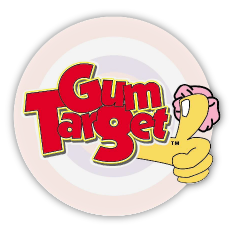Littering is a global problem that presents potential health and safety hazards. Despite increasing public awareness about the importance of proper waste disposal, littering, including chewing gum litter, remains a persistent issue. These inspiring initiatives spearheaded by various entities across the globe are making considerable efforts to mitigate this problem.
Singapore’s “Keep Singapore Clean” Campaign
The “Keep Singapore Clean” campaign was spearheaded by the then Prime Minister, Lee Kuan Yew, in 1968. The focal point of this campaign was that cleanliness should become a way of life in Singapore. The government recognized that it was crucial to modify citizens’ personal habits and upgrade their cleanliness standards. They took a three-pronged approach, educating the public, improving cleaning practices, and strictly enforcing cleanliness laws.
Schools were enlisted in the campaign by conducting cleanliness inspections, while teachers played a significant role in instilling good sanitary practices in the young minds. Seminars were organized for adults to comprehend the campaign’s essence and participate actively. Numerous flyers and posters were distributed to households, making every resident aware of the campaign’s objectives. Public service broadcasts and mass media were used explicitly to foster the message of cleanliness.
Public toilets were improved and maintained regularly. Food stalls and hawker centers were scrutinized and revamped to meet the stipulated cleanliness criteria. Thousands of litter bins were installed throughout the country to encourage proper waste disposal, and refuse collection services were improved to ensure regular and systematic disposal of waste.
Penalties and fines were imposed on those violating the rules. Even minor offenses such as littering, spitting on roads, and uncleanliness in public spaces drew significant fines. This intent enforcement further boosted the productivity of the campaign.
The campaign’s success has been demonstrated in Singapore’s global reputation as one of the cleanest cities worldwide, often seen as a benchmark for clean urban living.
The “Keep Singapore Clean” campaign exemplifies how a collaborative effort from the government, public services, and citizens can accomplish significant environmental sustainability and cleanliness goals. It reiterates the concept that our habits and practices can indeed make a difference to the environment.
 Ireland’s “Bin It Your Way” Campaign
Ireland’s “Bin It Your Way” Campaign
The “Bin It Your Way” campaign was conceived as a national effort designed to sensitize the Irish public about the negative environmental impact of improper gum disposal. The campaign primarily focused on actively engaging the public in considering the practical implications of their actions and altering their gum disposal habits.
Colorful and engaging advertisements, displayed on billboards, bus shelters, and other prominent spaces, reemphasized the straightforward yet powerful message inherent in the campaign’s title, “Bin It Your Way.” These ads, demonstrating proper gum disposal, reminded the Irish citizens of their responsibility towards the environment on a daily basis.
Workshops were organized in schools and colleges throughout the country. The educators provided informative lectures and presentations on the environmental hazards caused by improper gum disposal. They conveyed the critical role that every individual could play in solving this problem.
A litter enforcement strategy was implemented where litter wardens patrolled the streets, imposing fines on individuals who were found guilty of improper gum disposal.
In towns and cities across Ireland, the campaign’s street ambassadors engaged directly with the public, increasing awareness about the gum litter problem and encouraging citizen participation.
The “Bin It Your Way” campaign showed substantial results post its execution. The campaign impacted the mindset of the public at all levels, resulting in a significant reduction in chewing gum litter in the streets of Ireland. The educated youth actively participated and led the mission for a cleaner environment by curbing gum litter.
The “Don’t Mess with Texas” Campaign in the United States
Launched in 1986 by the Texas Department of Transportation, this campaign focused on curtailing the alarming rate of littering on the Texas highways. The creative strategy behind the campaign was simple yet persuasive, transforming pro-environmental behavior into a manifestation of state loyalty. The campaign’s slogan served as a stern yet friendly reminder that littering was not only illegal but also dishonorable to Texas’s pride and heritage.
The campaign strategically employed the famous Texas celebrities, musicians, athletes, and even astronauts in their advertisements and public service announcements. Their familiar, respected faces endorsing the campaign’s messages resonated deeply with Texans and inspired them toward responsible behavior.
Younger Texans were taught about the adverse environmental impact of littering, the associated legal penalties, and the cost to taxpayers. Regular littering surveys were conducted, providing statistical feedback on the effect of the campaign’s efforts and identifying areas that required further focus.
One unique aspect of the “Don’t Mess with Texas” campaign was the Trash-Off initiative – an annual volunteer cleanup program. Thousands of Texans across the state would participate, gathering to collect and safely dispose of the litter found on their highways.
The “Don’t Mess with Texas” campaign continues to be a force behind the sustained reduction of highway litter across the state. It has successfully altered perceptions, influenced behaviors, and instilled an enduring ethos of environmental responsibility among Texans.
United Kingdom’s “Love Where You Live”
Launched in 2010 by Keep Britain Tidy, in collaboration with several partner organizations, this campaign hinged on the principle of sustaining a clean and green environment by fostering a sense of local ownership and pride among residents. It promoted the idea that every individual has an important role in maintaining their local environment’s tidiness.
The fundamental communication strategy employed in the campaign was a broad range of activities aimed at promoting responsible behavior, including volunteering, recycling, general cleanliness, and reducing, reusing, and recycling waste. Its messaging was simple and impactful, appealing to people’s love for their communities and their desire for a clean and pleasant environment.
By partnering with schools across the country, “Love Where You Live,” aided by educational resources, facilitated teachings about the importance of protecting and caring for the environment. This gave children a sense of involvement and responsibility towards their locality that could permeate well into adulthood.
It encouraged corporates to support their employees in participating in clean-up events, creating an environment-friendly culture at the workplace. The businesses’ support fostered a sense of community involvement outside the confines of their offices.
The presence of a dedicated website for the campaign served as a central hub for sharing ideas, experiences, and best practices among different communities throughout the United Kingdom.
While the campaign primarily targeted a change in individuals’ attitudes toward their immediate surroundings, it had far-reaching implications for the larger environment. The “Love Where You Live” campaign has led to a more conscious community, contributing to cleaner neighborhoods.



